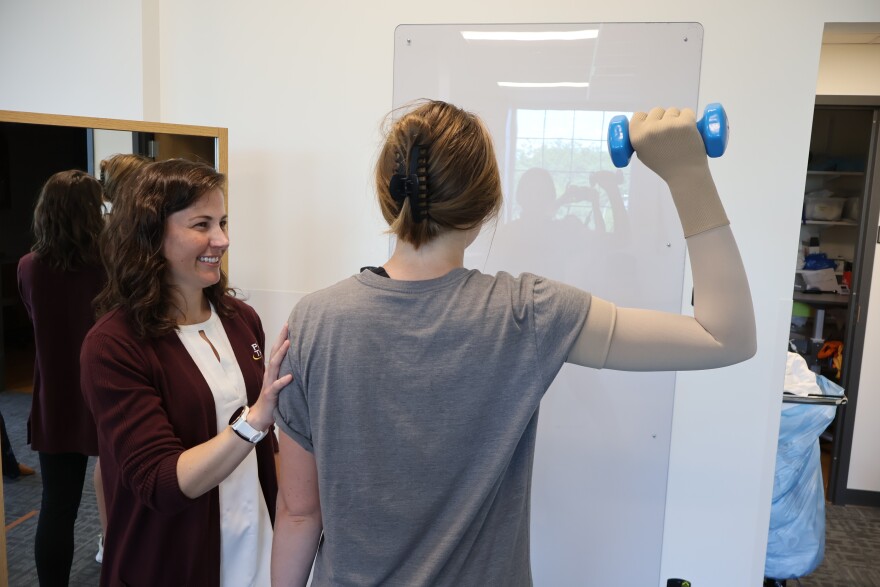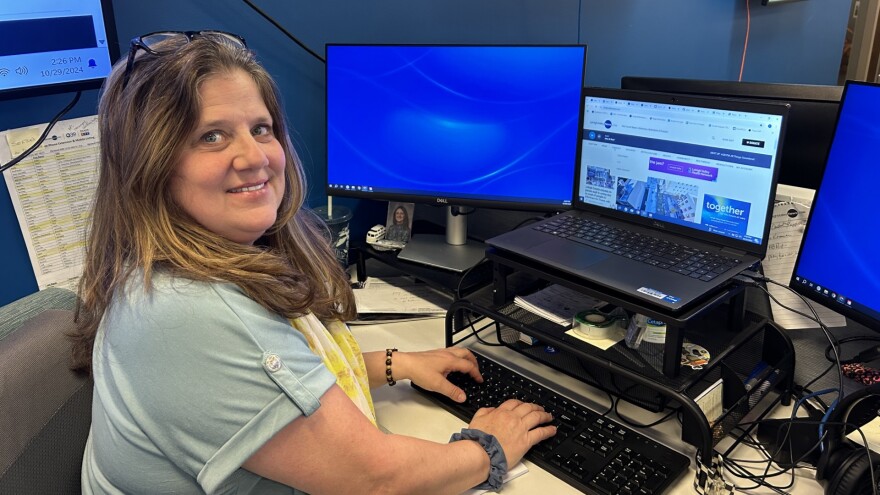BETHLEHEM, Pa. — Cancer is a common disease in this day and age, and most people know someone with a diagnosis — whether it’s a family, friend or acquaintance.
And while doctors have made great advances in treating breast cancer with common remedies chemotherapy and radiation, a lesser-known treatment that can be beneficial in the healing process is physical therapy.
That was the case this year, for a member of the LehighValleyNews.com team, as a coworker shared her diagnosis: breast cancer.
“This was a nightmare. This didn't go exactly as it was supposed to go."Cancer patient Christine Sexton
“I was diagnosed after a routine mammogram in May,” Christine Sexton, a digital content producer for Lehigh Valley Public Media, said.
“Then I had additional testing to see if it was anywhere else, and if so, to what extent."
Sexton, of Bethlehem, who has a family history of breast cancer, ultimately learned that she had low-grade ductal carcinoma in-situ, meaning it hadn't spread, on one side. On the other, pathology defined it as multifocal mixed invasive lobular and ductal carcinoma, stage one.
A double mastectomy and the first step in reconstruction took place in July. The cancer was completely removed. Great news.
Unfortunately, there were complications and a second surgery was needed, causing additional scarring underneath the skin.
“This was a nightmare," Sexton said. "This didn't go exactly as it was supposed to go.
"You have your mastectomy, and if you opt for reconstruction, it's not a single step. I had trouble with the first step, tissue expanders, which act like placeholders while the area heals.
"Mine was bruised from day one, which is normal,” she said. “But it never went away, and blisters developed where the skin was overstretched."
A different kind of treatment
Sexton, a mother of one, had to undergo another surgery to have the expanders removed. Surgery after surgery caused a buildup of scar tissue.
Sexton said that at times, she was unable to lift her arms above her head. The skin on her chest felt tight and .
That’s when her plastic surgeon recommended a different kind of treatment — physical therapy.
Sexton was connected to cancer rehab specialist Melinda Steimling, a physical therapist at St. Luke's University Health Network.

"Many women have trouble reaching over their head after breast surgery or breast reconstruction due to tightness of the shoulder or the chest due to pain or due to weakness that can happen just from the surgery experience," Steimling said.
"And PT can help with this.”
Steimling also is interim program manager for St. Luke's cancer rehab and lymphedema physical therapy team.
“Physical therapy can be beneficial for all individuals during and after breast cancer treatments, because there are many bodily side effects from cancer treatments that can last a lifetime and can be problematic or limiting on a cancer survivor,” she said.
"For example, breast cancer surgeries can cause scarring that can cause pain, and those scars can benefit from massage as early as a month after surgery to help them heal better.”
Sexton said she felt relief with Steimling right away.
"Gentle stretching made a huge difference immediately,” she said.
'Little things that you take for granted'
Steimling explained the process.
"My sessions often start in a private treatment room, where I am providing that massage or skilled manual therapy for at least 15 to 30 minutes to address scar tissue and pain and even chronic swelling called lymphedema, which is a side effect of cancer treatments," she said.
She said that afterward, she takes her patients into the more classic physical therapy gym setting.
"It should be prescribed across the board."Cancer patient Christine Sexton
“I would guide the survivor through specific exercises that either target their fatigue with aerobic exercise on a bike or their balance or their pain and their weakness of their upper body through specific stretches and strengthening exercises,” Steimling said.
She said there's research to support resistance training and weightlifting can help breast cancer survivors regain function and combat pain from cancer treatments and get back to their previous lifestyle.
“Whether or not a woman ends up with complications of any kind, just having that ally working closely with you, in a private room where you can get emotional, which floods in unexpectedly, and then in the gym area with weights, where you can feel like you're actually doing something positive with your body, it should be prescribed across the board," Sexton said.
"Finally, I can wash my hair without bending my head a certain way so that my hair hangs down because I couldn't raise my arm.
“So all those little things that you take for granted, really they're being replaced or put back with PT."

'Back to their old normal'
Sexton said she attends physical therapy twice a week to reduce scar tissue and increase her range of motion.
"I feel better about myself," she said. "I feel more like myself. I'm doing things at home and I'm not nervous that I'm going to move the wrong way, like it's given me a lot of confidence.”
Steimling said the difference in her patients after starting the treatment is evident.
“I see an immense reduction in survivors' stress levels, and a major increase in their confidence and satisfaction with the whole cancer treatment experience after their time in therapy."Cancer rehab specialist Melinda Steimling
"I do feel that many women who start therapy with me come in feeling very lost about how to get back to their old normal," she said.
"Be it returning to work, exercising confidently or just washing their hair or unloading the dishwasher without pain.
“I see an immense reduction in survivors' stress levels, and a major increase in their confidence and satisfaction with the whole cancer treatment experience after their time in therapy."
Steimling said those interested in physical therapy should speak with their oncologist first, even if it's been years since finishing cancer treatments.
She said most individuals can get a physical therapy evaluation, even without a doctor's prescription, and sessions often are covered by insurance.


